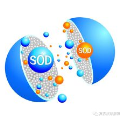Effective fusion of different types of features is the key to salient object detection. The majority of existing network structure design is based on the subjective experience of scholars and the process of feature fusion does not consider the relationship between the fused features and highest-level features. In this paper, we focus on the feature relationship and propose a novel global attention unit, which we term the "perception- and-regulation" (PR) block, that adaptively regulates the feature fusion process by explicitly modeling interdependencies between features. The perception part uses the structure of fully-connected layers in classification networks to learn the size and shape of objects. The regulation part selectively strengthens and weakens the features to be fused. An imitating eye observation module (IEO) is further employed for improving the global perception ability of the network. The imitation of foveal vision and peripheral vision enables IEO to scrutinize highly detailed objects and to organize the broad spatial scene to better segment objects. Sufficient experiments conducted on SOD datasets demonstrate that the proposed method performs favorably against 22 state-of-the-art methods.
翻译:现有网络结构设计大多基于学者的主观经验以及特性融合过程,没有考虑到引信特征和最高层特征之间的关系。在本文件中,我们侧重于特征关系,并提出一个新的全球关注单元,我们称之为“感知和调控”区块,以适应性的方式调节特征融合过程,明确建模各特征之间的相互依存关系。感知部分利用分类网络中完全相连的层的结构来学习物体的大小和形状。监管部分有选择地加强和削弱要结合的特征。模仿眼观察模块(IEO)进一步用于提高网络的全球感知能力。模仿软视和外围视觉使IEO能够仔细检查非常详细的天体,组织广泛的空间场,以更好地区分物体。在SOD数据集上进行的充分实验表明,拟议的方法优于22种最先进的方法。




